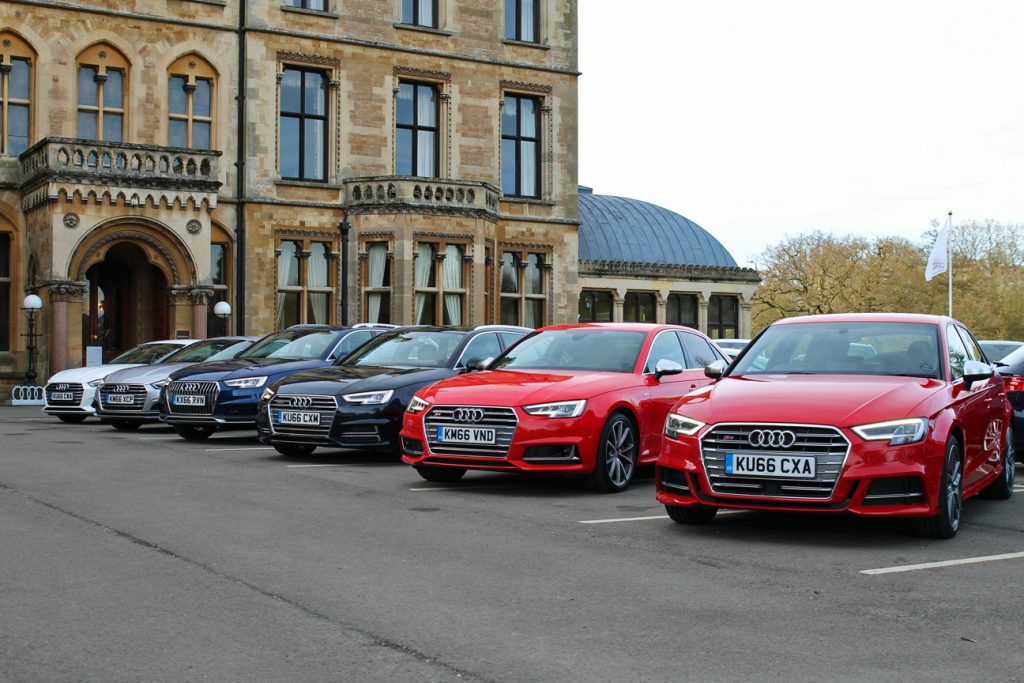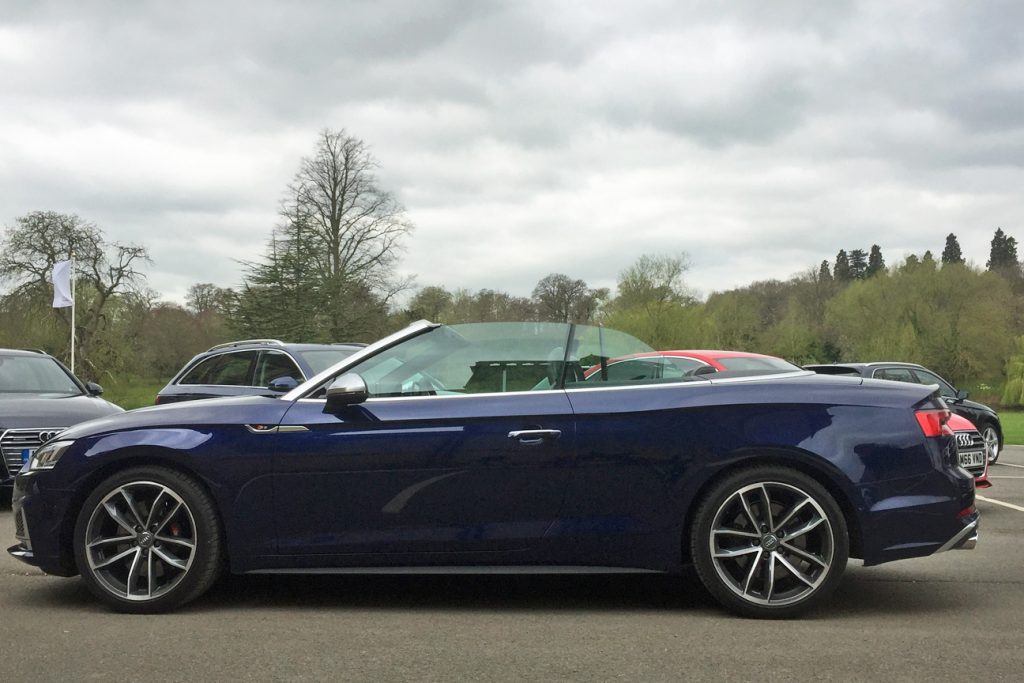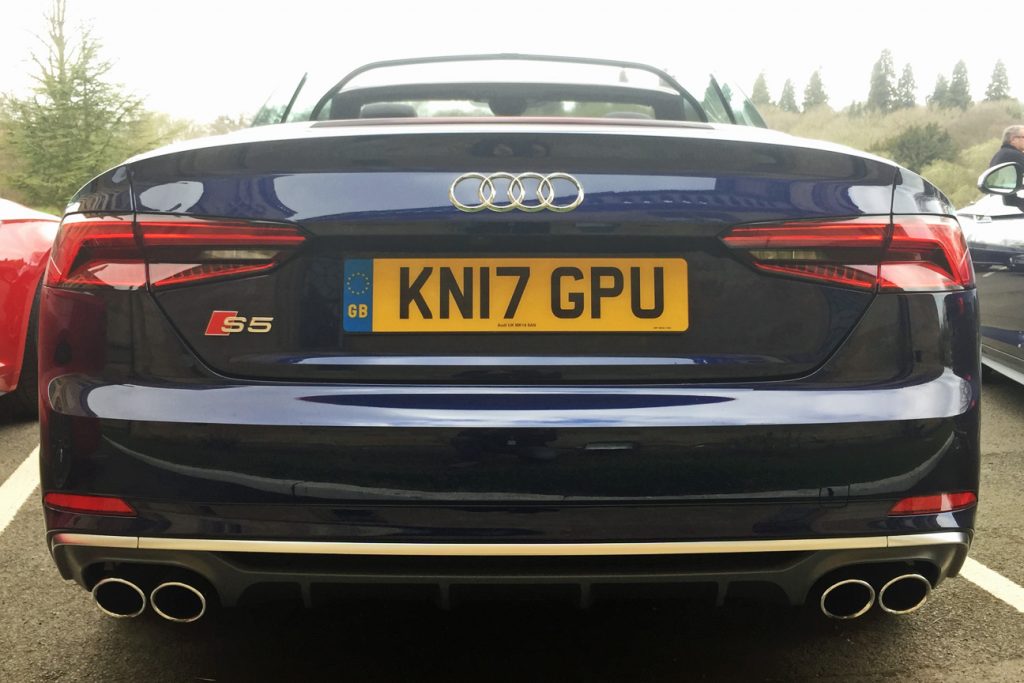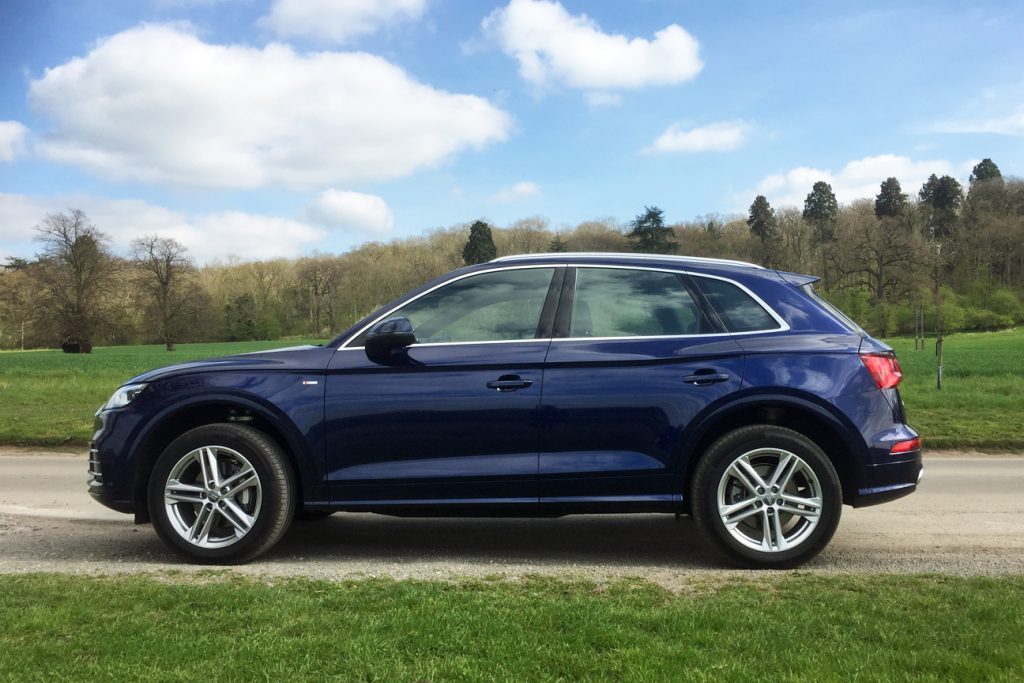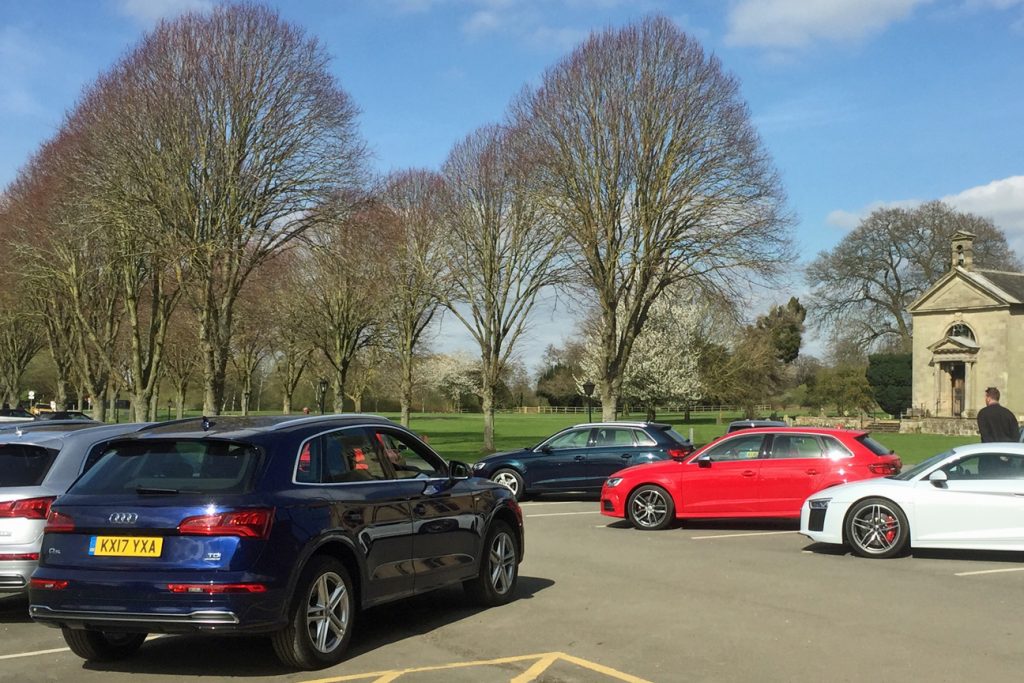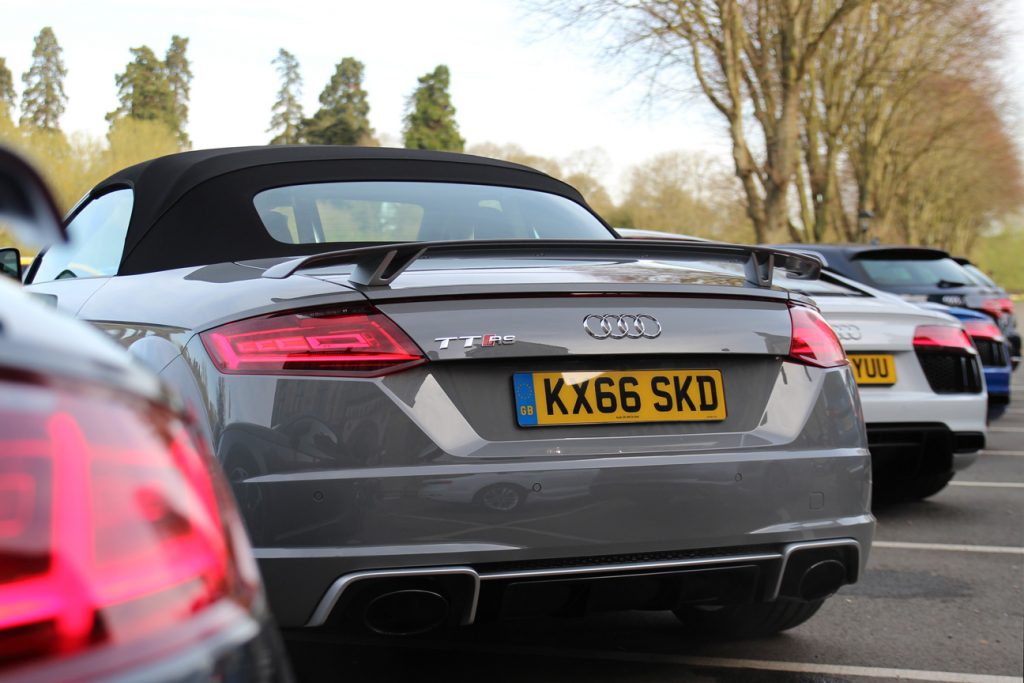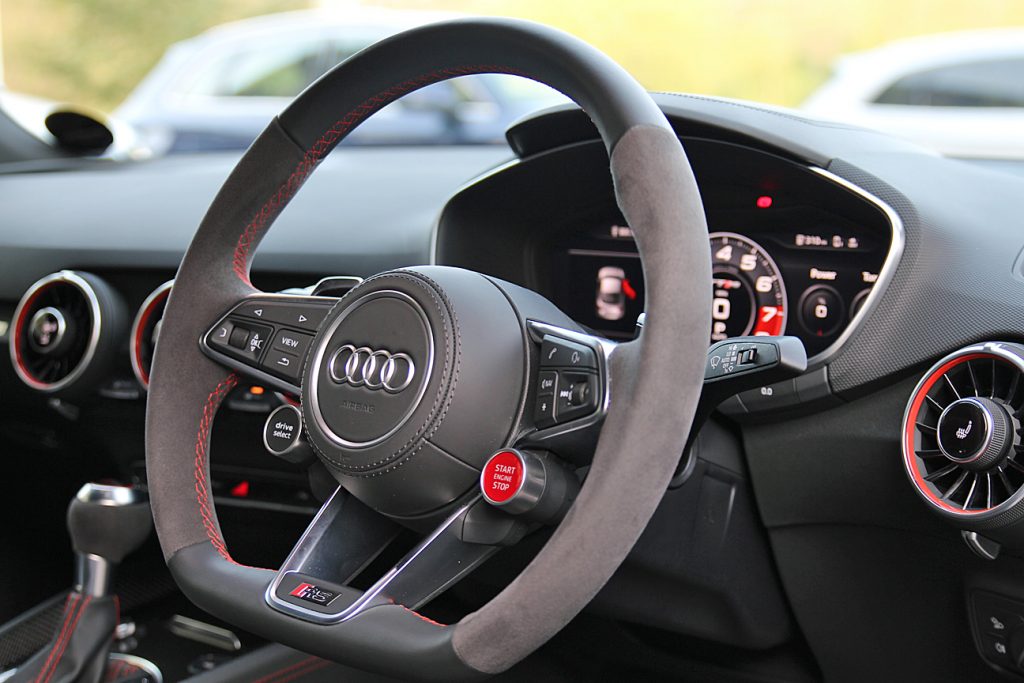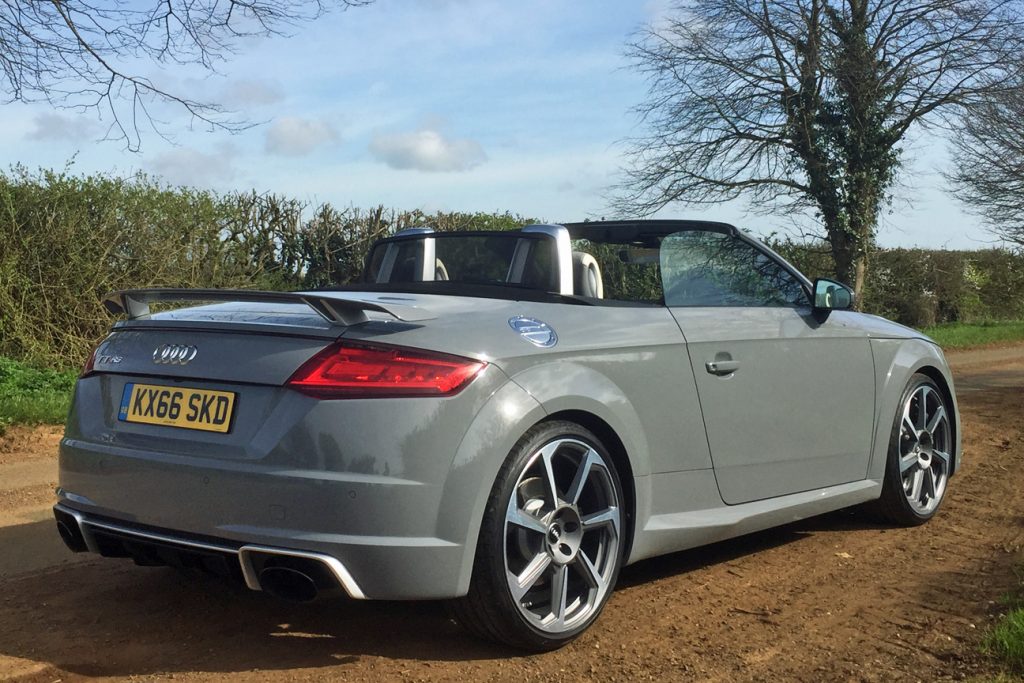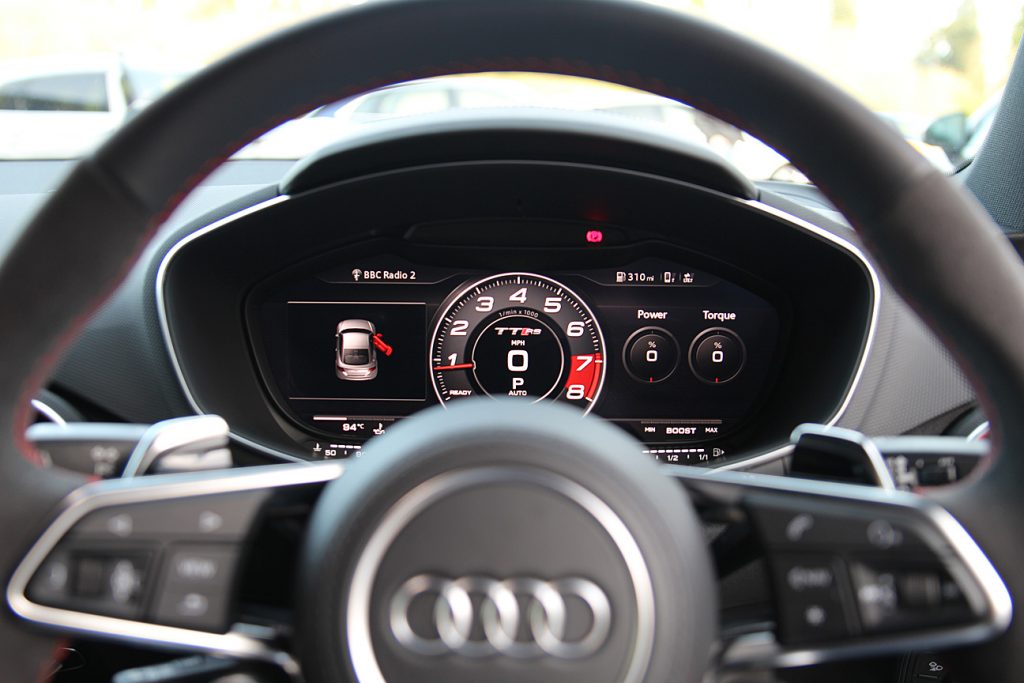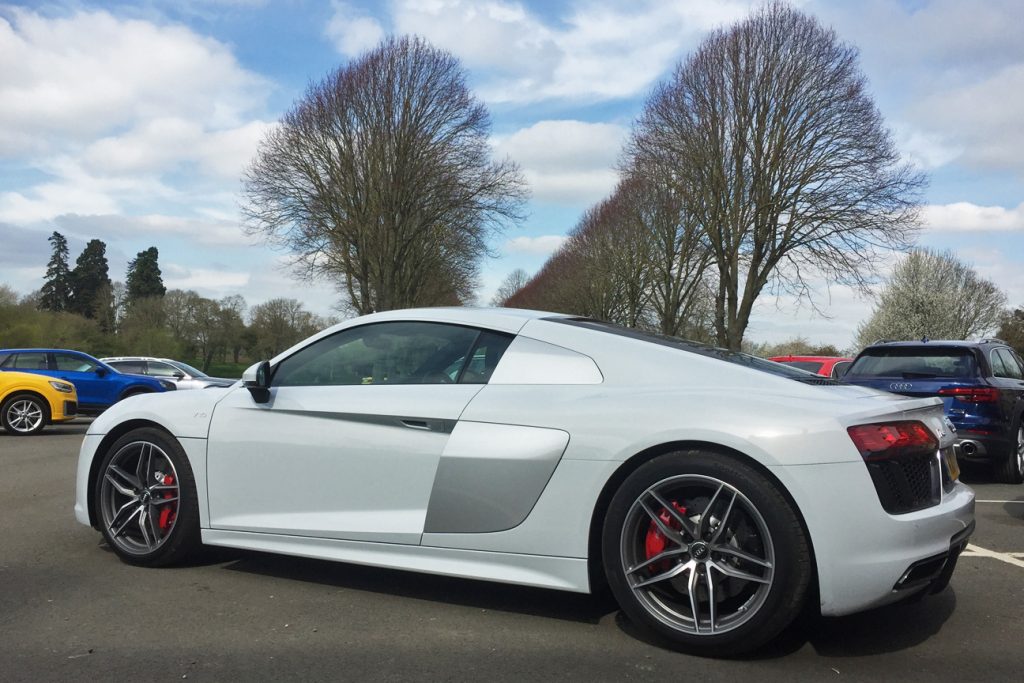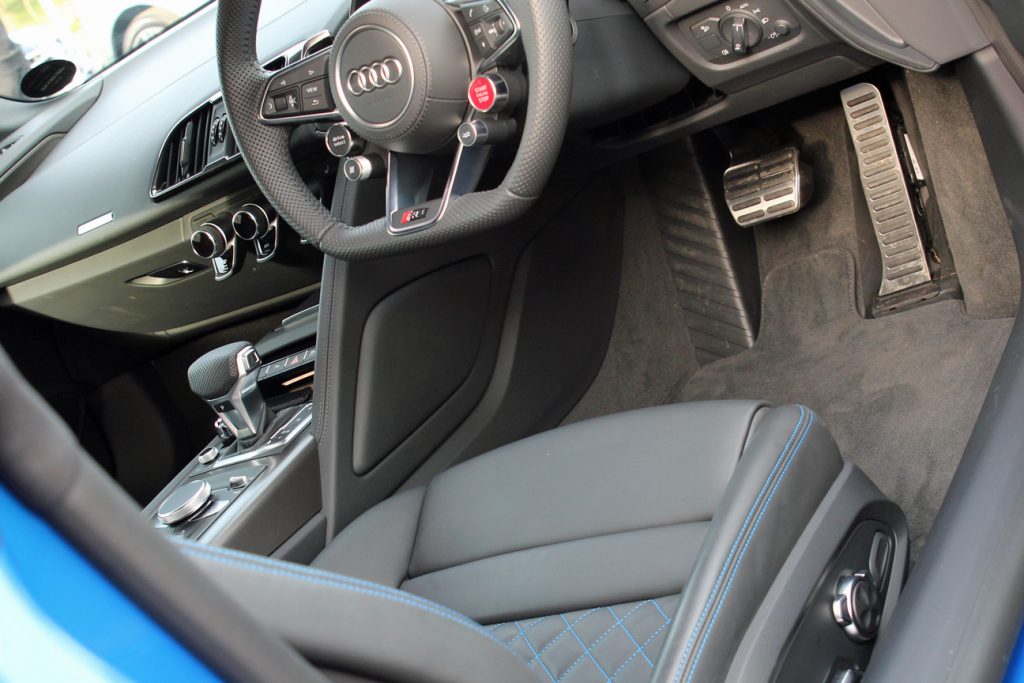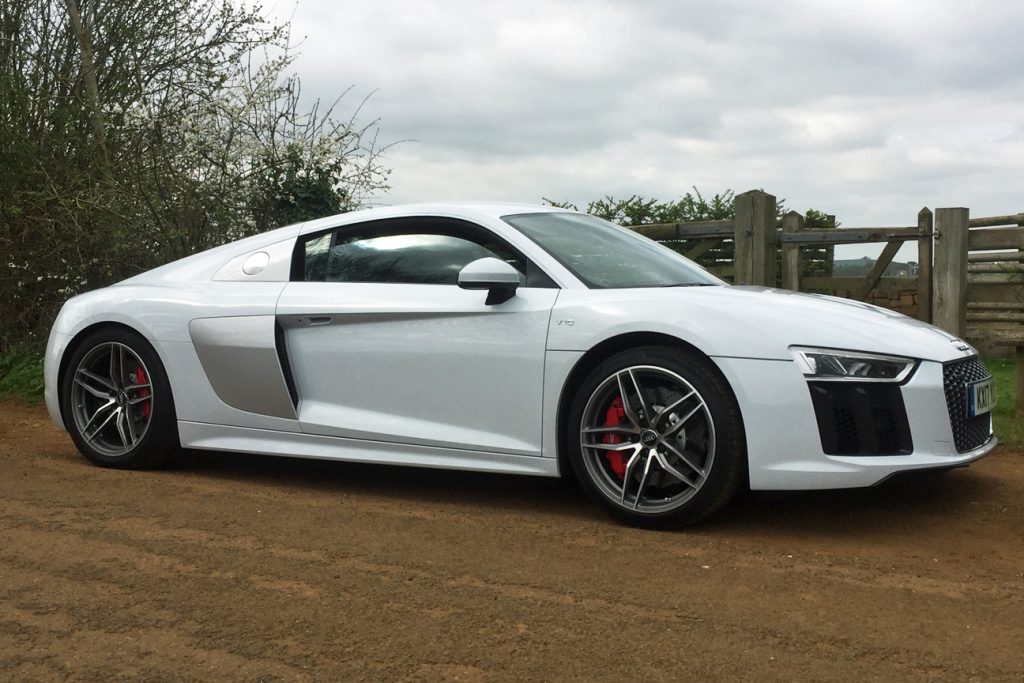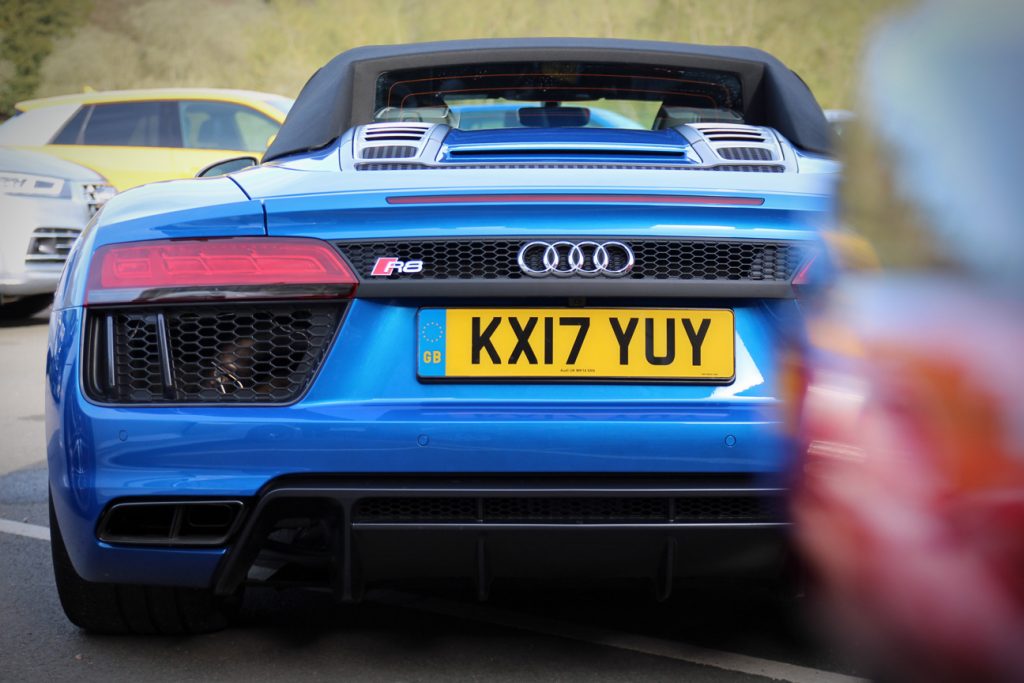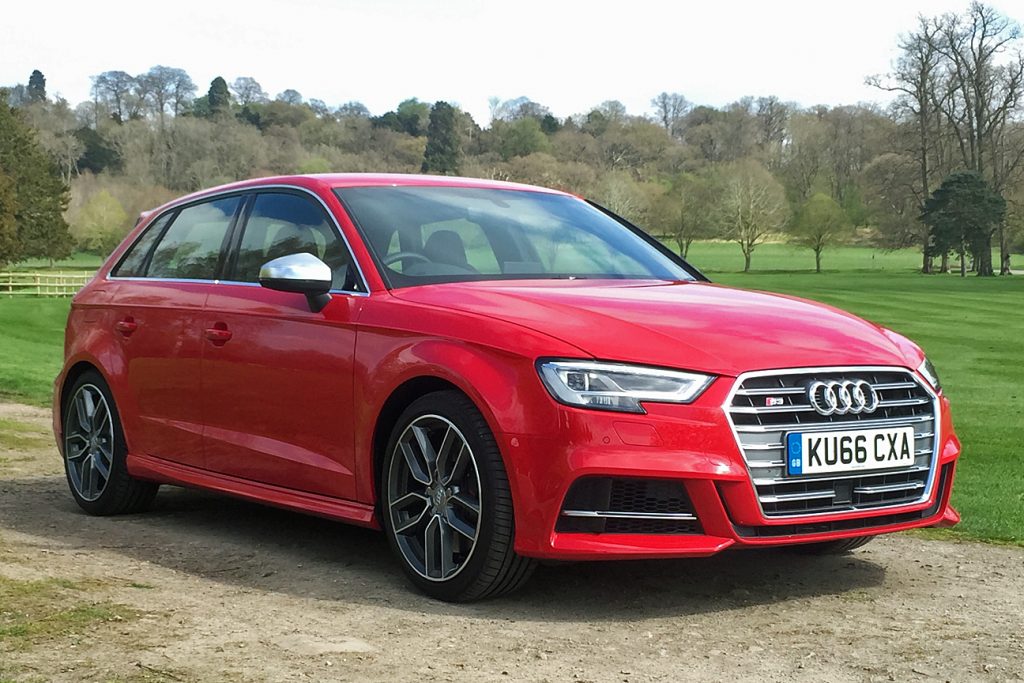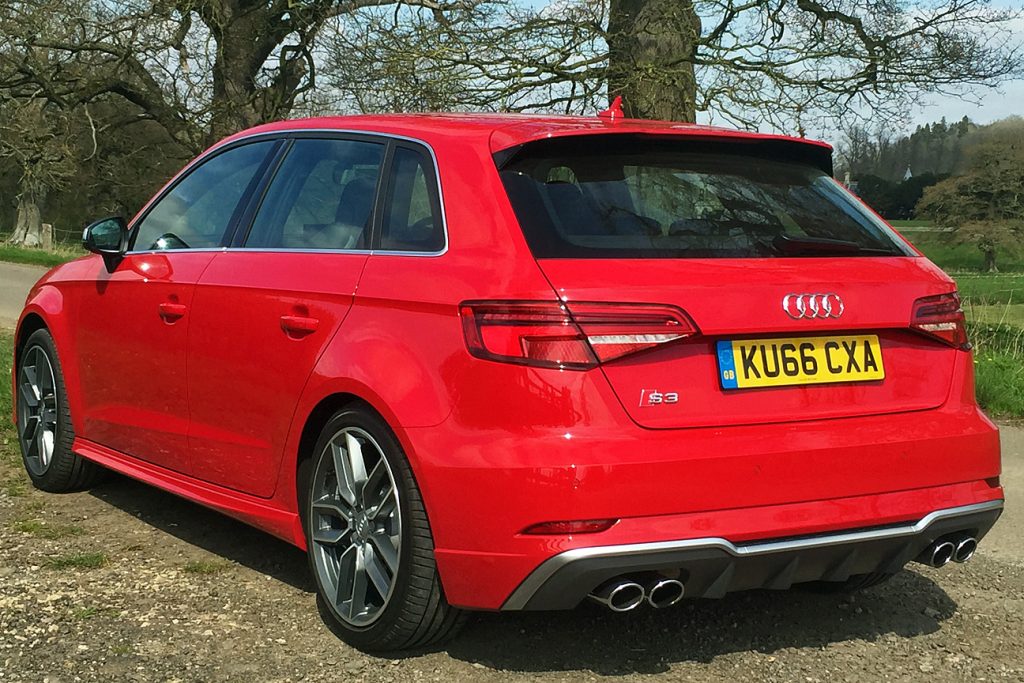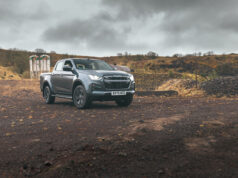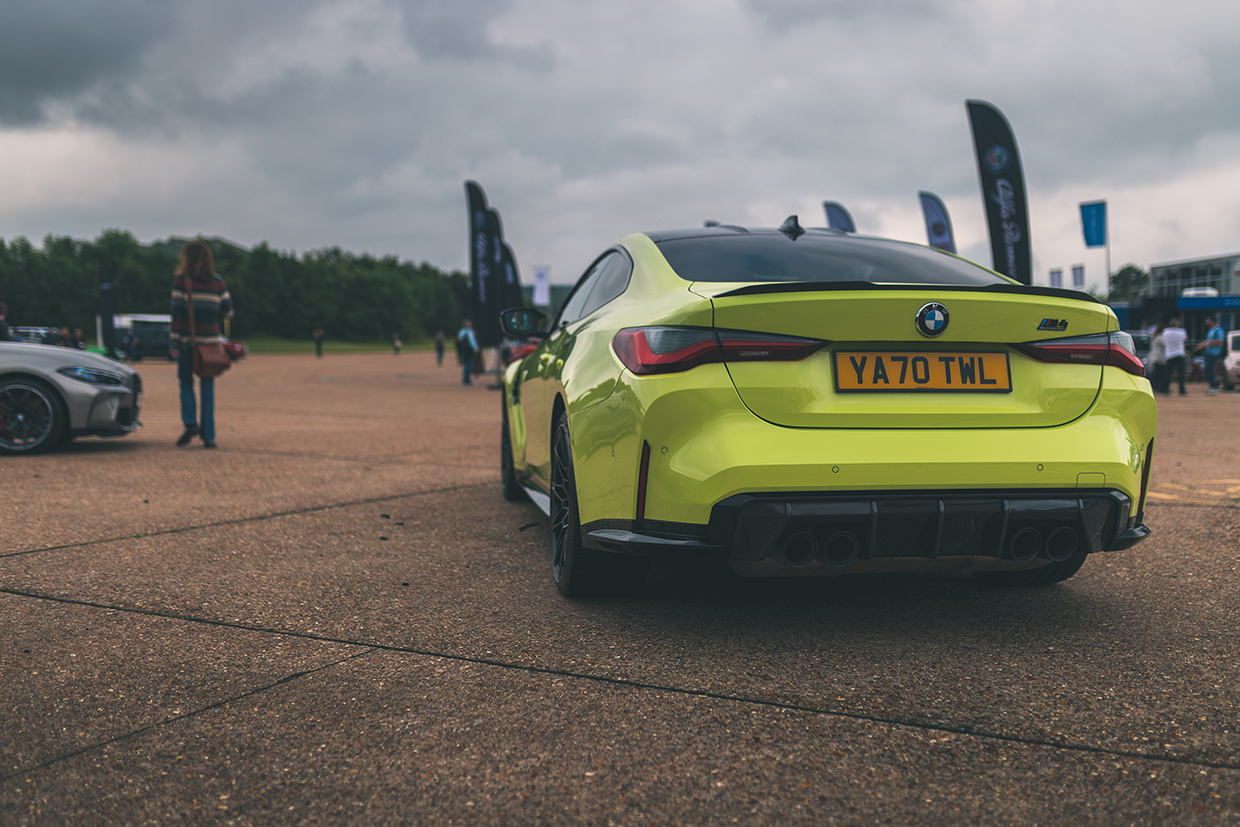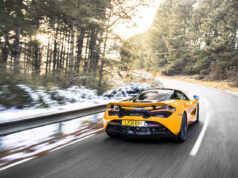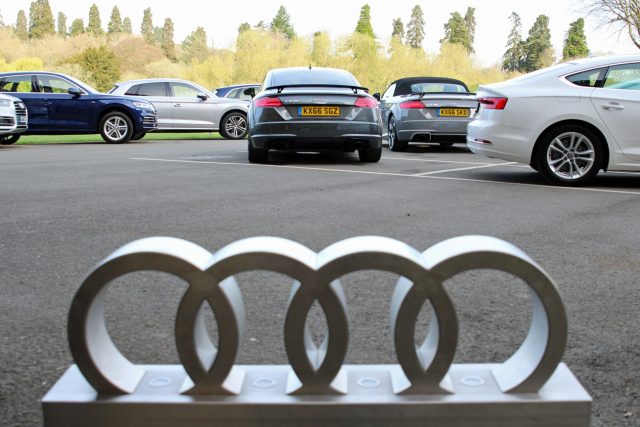
The main focus of the recent Audi Range Review event was the launch of the new A5, S5 and Q5 models. The latter, their mid-range SUV, has been a huge sales success, selling 1.6 million units since its launch in 2008, and playing a part in Audi’s seemingly constant expansion. This assertive marketing and development has seen their range more than triple, from 17 to 52 models in 16 years. A substantial increase, and while you may argue that some of that is due to the creation of niche markets for which there wasn’t initially a demand, there certainly seems to be now.
The format of the day meant that test drives were limited to between 25-50 minutes depending upon your chosen route. Not enough for a full review but sufficient for an initial assessment. One key point mentioned at the briefing was that focus had been placed on delivering a more compliant ride and reducing weight. Both of which can only be a good thing.
A selection of the full model range from A1 to R8 were available to try, but more of those later. Being a sunny day, the obvious variant of A5/S5 to try was the S5 cabriolet (well you would wouldn’t you?).
The updated design is definitely more evolution rather than revolution and distinctly ‘Audi’, but it looks sharp and every inch a premium product. Inside it’s also business as usual, with a beautiful mix of materials – leather, alcantara and carbon fibre – does any mainstream manufacturer do interiors better than Audi? They might not be the most exciting but the quality is there in spades.
The powertrain is a newly developed 3.0 litre V6. Using a ‘hot V’ turbo configuration (turbo charger squeezed in-between the two cylinder banks), it develops a healthy 354 PS, mated with the ZF 8 speed automatic and Audi’s Quattro four wheel drive system. All of which proves to be a decent combination. Loads of torque makes fast progress easy, throttle response is good for a turbocharged engine and gear changes are generally smooth, albeit not as fast as a dual clutch.
Ride comfort is indeed an improvement on previous generation Audi’s, being generally well controlled and comfortable. There is some evidence of a reduction in body rigidity as a result of the roof being chopped off, but this is largely kept in check during normal driving.
Grip levels are high, yet despite being fitted with the optional sports differential and dynamic steering, the cabriolet isn’t the most engaging drive. If you do up the pace, the Achilles heel of modern fast Audi’s, understeer, can put in an appearance. Not to a huge extent mind, but it re-enforces the impression that it prefers being driven in a slightly more relaxed manner. Overall though, it’s a lovely place to make fast, comfortable, relaxed progress.
Next up the Q5. Again, exterior and interior design changes are incremental and there’s nothing here to shock a seasoned Audi driver. The interior is excellent, high quality and well-designed although the use and configuration of the infotainment isn’t as intuitive as it could be.
The 2.0 litre, 190 PS, S tronic spec will no doubt be a popular combination and it’s easy to see why. The 7 speed dual clutch ‘box shifts seamlessly and while in the real world the 2 litre diesel is as quick as most folk will want, with a claimed 0-62 mph of 7.9 seconds. The engine is refined too, more so than the equivalent in the Jaguar F Pace which is noticeably more intrusive. That said, from a handling perspective it’s not as involving to drive as the F Pace which does a better job at disguising its SUV’ness when you want to have some fun.
The Q5 is comfortable, smooth and rides well with imperfections and bumps largely being soaked up well, especially as this is an S-Line specification model which historically has meant the opposite. A weight reduction of circa 90kgs for this revised model and that attention to ride quality obviously paying off.
There is a price to pay though, and this 2.0 TDI Quattro S Line S tronic model starts at £40K before you’ve had a glance through the options list. As a quality family car though it ticks a lot boxes and I suspect the sales success will continue.
Anyone who still considers the TT a soft option or a bit ‘hairdresser’, obviously hasn’t driven the current generation, especially the RS derivative. It’s a genuine high performance car. The 2.5 litre, 5 cylinder, turbo charged engine produces 400 PS (394 BHP in old money) and huge amounts of torque. In conjunction with a 7 speed dual clutch transmission and superb traction (all TT RS’s are 4WD), it is genuinely a very fast car (will 0-62 mph in 3.9 seconds do?). And not just in comparison to its competitors. Cross country, I suspect it would give cars from the next rung up the performance ladder something to worry about, especially if you throw in less than favourable conditions.
But it needs to be good though as the price has increased in line with its performance and capability. This Roadster version starts off at £52K, add the generous set of options fitted to this test car, and the total is a smidgen over £70K. That puts it up against some serious competition such as the Porsche 718 Cayman/Boxster S (which no longer have the advantage of 2 extra cylinders), the Jaguar F Type and BMW M2.
That said, if you’re restrained with the boxes you tick when ordering, it’s a contender. Performance, build quality and usability are all top notch. The interior is superb – stylish, beautifully designed and very well put together. The virtual cockpit (a full 12.3 inch customisable display) is very cool and works well in the various modes of the Drive Select system (Comfort, Auto Dynamic and Individual).
On this roadster version, the fabric hood opens or closes in just 10 seconds and can be done at speeds up to 30 mph. With the roof down, buffeting is minimal and that 5 cylinder engine has some real character and sounds great, especially in Dynamic mode when the exhaust gets a bit more vocal. Roof up there a bit more wind noise that expected but it’s reasonably refined.
Point to point it’s a very quick car, helped by being compact and easy to place. Although the throttle response does suffer from noticeable lag at times when lower down the rev range, and the gear changes didn’t seem quite as fast and snappy as they should be. For all its ability, there’s an argument that the TT RS is possibly not as involving as the obvious rival, the Cayman/Boxster. But with the performance advantage and the more charismatic engine, the choice between the two is a close run thing.
Now to the Daddy – the R8. This is the standard model not the Plus so it has to make do with ‘just’ 540 PS opposed to 610 from its naturally aspirated V10. And what an engine it is! Although this is the lesser powered model (all relative), the performance is superb and in the real world it never feels lacking, and I can’t imagine it never being quick enough.
Inside, it’s all rather nice as expected and not intimidating to drive for a Supercar. The gearbox (7 speed dual clutch only) is fast, super smooth (felt sharper than in the TT) and in Auto mode will happily potter along. But that’s a waste – so Dynamic mode it is. Open up the (what should be mandatory) sports exhaust, and the R8 sounds fantastic. While for some, the R8 might be considered to be more clinical and less emotive than more exotic rivals, the engine goes a long way to counter that, and is a major factor in what makes the R8 feel special. Even more so now that large capacity engines are rapidly becoming scarce as the majority of the competition have moved to turbo charging. Throttle response is immediate and it relishes being revved, howling away as you head towards the 8,500 rpm red line, with childishly addictive cracks and bangs accompanying you through the gears. Genuine supercar stuff.
Ride quality and grip level are both high, the steering lacks a little weight and feel but is direct and it’s easy to place the car accurately. All of which makes fast progress very easy. Possibly too easy, but that same ‘criticism’ can be directed at a number of current sports/supercars. Another problem for the R8 comes from its sibling , the TT RS. In the real world I suspect you would probably cover ground pretty much as quickly in the TT as you could (or would want to) in the R8. However the latter feels so much more of an event, largely because of that engine. It really is rather special.
There is a definite charm to a supercar which is challenging to drive, but likewise one that can wear multiple hats is also appealing, and this is where the R8 scores. When you’ve finished being juvenile and making lots of noise, you can switch it into Comfort mode, quieten down the exhaust, relax and enjoy the lovely interior.
One annoyance is the buffeting when you have the window open certain amounts – and obviously you want the window open to hear that glorious V10. This can be solved by opting for the Spyder version, in which the noise is even better. Unfortunately, a result of chopping the roof off is that cabin space, specifically legroom, is significantly reduced. To the point at which the Coupe might be the only option for taller drivers. If you can fit in the Spyder then that would be my preferrance, but go for either and you’ll have made a superb choice.
Last drive of the day was a brief run in the S3 Sportback. After the TT RS and R8 there was a chance this would be a bit of anticlimax but it proved to be anything but and there was something I really liked about the S3. Maybe it was the fact that this was the only manual car I drove all day, or that it reminded me a bit of my trusty old Impreza, but my short drive in the S3 was one of my favourites.
It’s compact dimensions give it a real ‘chuckable’ feeling (helped by being lighter than previous models) and it seems to encourage you to drive it hard and have fun – without having to drive at speeds which might be looked on unfavorably. The premium hot hatchback market isn’t lacking in competition. Golf R, A45 AMG, BMW M140i and the Focus RS, are all worthy of a look but with 310 PS, four wheel drive, practical hatchback body, a classy interior and a list price of £32K the S3 has a lot going for it.
With further expansion planned to include the forthcoming Q4, Q6 and Q8, it looks like that 52 model range isn’t going to stand still.


